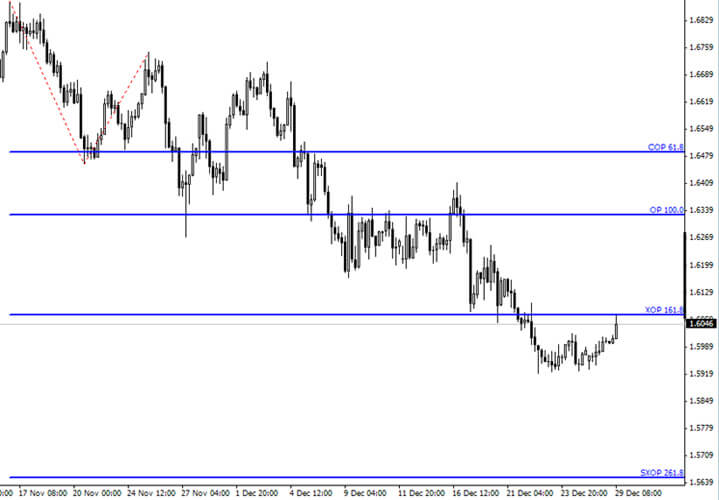Joe DiNapoli is a well-respected professional trader with impressive trading experience of over 40 years. He has adapted the use of Fibonacci levels and introduced his own system known as DiNapoli trading style.
Of all the available retracement levels (.236, .382, .50, .618, .764) J. DiNapoli has chosen only two: .382 and .618. He did so because he noticed that these very levels serve as significant support levels during a retracement. You can see them plotted on the Chart 1 below.
Chart 1. DiNapoli retracement levels
The main idea of DiNapoli method is as follows: as soon as the price rebounds from any of these levels and forms an ABC pattern, it serves as an indication of the trend continuation.
Apart from the mentioned two retracement levels, the author also uses 3 expansion levels. The fourth one, the super expanded objective point, was later added by other traders who use the DiNapoli style. Here are those levels:
1. COP - contracted objective point = .618 of the length of wave A measured from the end of a corrective wave B;
2. ОР - objective point = 100% of the length of a wave A measured from the end of the wave B;
3. XOP - expanded objective point = 1.618 of the wave A measured from B;
4. SXOP - super expanded objective point = 2.618 of the wave A measured from B.
The obvious conclusion to applying these particular expansions is that the length of the corrective wave also plays a significant role: all the measurements start from the end of the corrective wave B.

Newbies often make a mistake, calculating the expansion and retracement levels of the waves whose role and place is vaguely understood. To bring some order to the calculations, Joe DiNapoli has introduced the "reaction number" term, which gives its specific corrective Fib-nodes. Below is a screenshot that shows reaction numbers and their respective Fibonacci expansions. Thanks to the reaction numbers, you will know what each expansion point means and where it derives from. Also you can see areas of "dating", where expansions of various reaction numbers fall into one area, at least approximately.
Newbies often make a mistake, calculating the expansion and retracement levels of the waves whose role and place is vaguely understood. To bring some order to the calculations, Joe DiNapoli has introduced the "reaction number" term, which gives its specific corrective Fib-nodes. Below is a screenshot that shows reaction numbers and their respective Fibonacci expansions. Thanks to the reaction numbers, you will know what each expansion point means and where it derives from. Also you can see areas of "dating", where expansions of various reaction numbers fall into one area, at least approximately.
The last screenshot shows all the actual Fibonacci retracements, expansions and the areas where they intersect giving strong supports and resistances.



